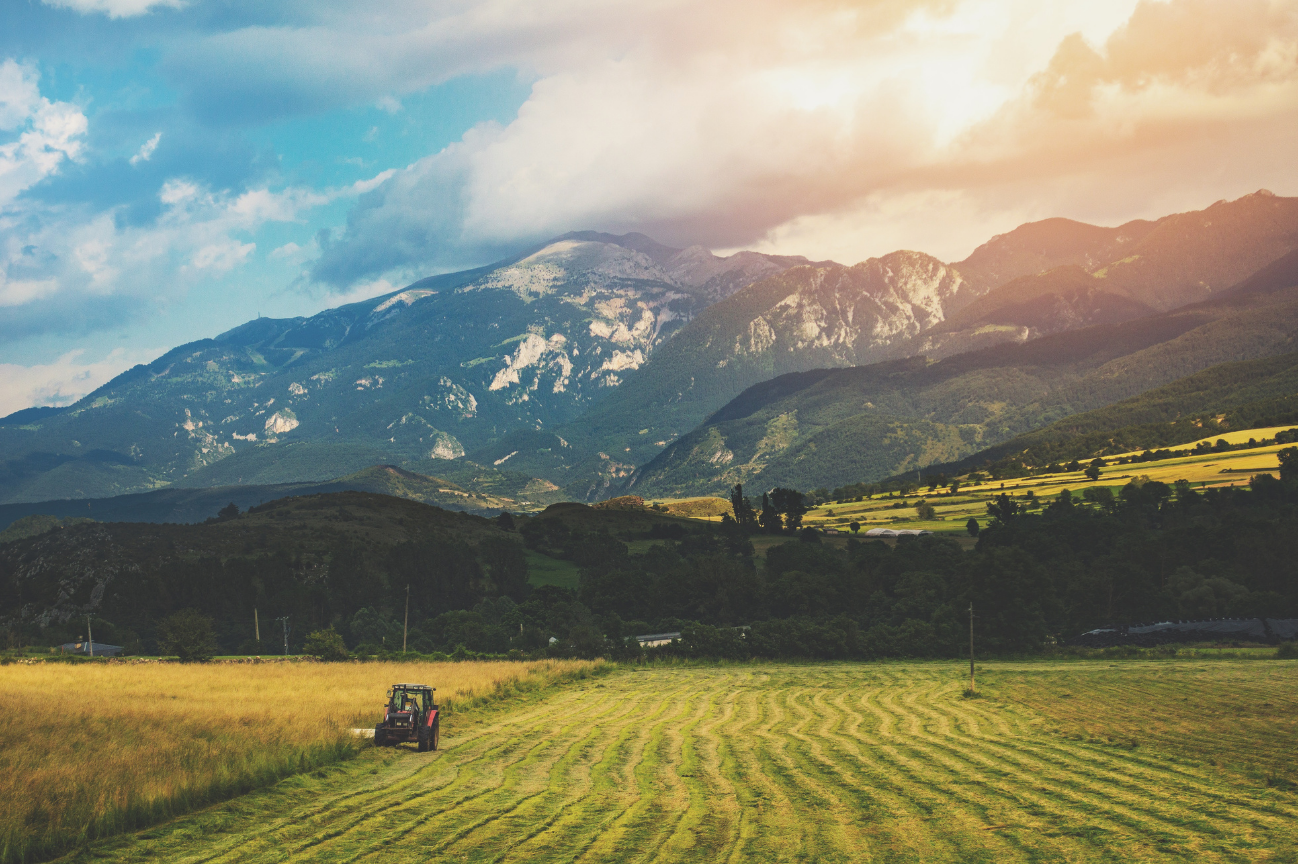Want to feed a goat, sip wine in a vineyard, or learn how your morning eggs got to your plate? Agritourism lets you do all that and more. It’s more than just sightseeing in the countryside. It’s about digging into rural life, connecting with nature, and creating unforgettable experiences that city tours can’t match.
Agritourism is booming for good reasons. These hands-on, educational adventures help families connect with nature, support local economies, and give travelers something Instagram can’t: authenticity. Whether you’re planning a school trip, a weekend getaway, or a seasonal outing, there’s something here for everyone.
In this guide, we’ll walk you through 9 engaging types of agritourism activities—from farm-to-table meals to vineyard tours. You’ll see how they work, who they’re perfect for, and why they’re growing in popularity.
1. Farm Tours and Experiences
The reason why agritouism is becoming popular is that it provides travelers with a genuine look behind the scenes, and farm tours are where agritourism begins. These tours are guided by local farmers who explain everything from crop rotation to composting.
Visitors might learn how to rotate crops, see tractors in action, or meet the animals who call the farm home. Some tours even allow guests to harvest crops or let visitors milk cows or goats, making them a favorite for families and curious foodies alike.
These tours also often highlight sustainable practices to give travelers a deeper appreciation for the food system.
2. Farm-to-Table Dining Experiences
Why just eat farm-fresh when you can dine at the farm itself? These immersive culinary experiences can include farm-to-table meals with ingredients harvested just steps away from your plate.
From gourmet dinners in the field to interactive cooking classes, these meals connect guests with the land in a flavorful, unforgettable way.
Farm chefs may share how seasonal ingredients are chosen, while guests enjoy the fruits (and veggies) of their labor. This isn’t just eating—it’s tasting the story behind each bite.
3. Agricultural Festivals and Events
Social media ideas for farm tours often begin with highlighting seasonal events that capture attention and drive engagement. From pumpkin patches in October to cherry blossom festivals in spring, these seasonal events bring communities and visitors together.
These events often encourage community participation and showcase local traditions, such as hayrides, food stalls, music, and flower displays. Many also include fruit or vegetable picking, so guests have something tangible to take home with them.
These festivals offer a blend of education, celebration, and commerce, which makes them key players in rural tourism.
4. Agritourism Lodging and Accommodation
Staying on a farm doesn’t mean roughing it anymore. Today’s rural lodgings include cozy cabins, farm inns, and even luxury glamping tents—often on working farms.
These stays may include bonus experiences such as collecting eggs, interacting with animals, gardening, or enjoying farm-style breakfasts prepared with produce from the backyard. Guests wake up to roosters instead of alarms, and kids get a real-life taste of rural living.
Accommodations like these are ideal for travelers seeking to unplug, reset, and experience meaningful moments in the natural world.
5. Animal Interaction and Petting Zoos
Kids (and let’s be honest, adults too) love meeting farm animals. Petting zoos are popular with school trips and families looking for interactive entertainment.
Depending on the farm, guests may feed chickens, hold baby goats, or even help care for animals as part of their stay. These activities offer hands-on farming experiences that both entertain and educate.
Safety is always a priority, and hosts ensure a supervised, enriching environment where everyone, from toddlers to teens, can feel comfortable.
6. Vineyard, Winery, and Brewery Tours
Agritourism meets adult indulgence with these tours that focus on locally-made wine, cider, or beer. Many involve wine or cider tasting sessions paired with food made from nearby farms.
Guests often walk through vineyards or orchards, learn about fermentation processes, and discover how terroir affects flavor. Some even offer seasonal grape stomping or cider pressing.
These experiences blend education, culture, and a touch of luxury, perfect for date weekends or grown-up getaways, and are a growing trend within the agritourism business landscape.
7. Nature Trails and Outdoor Recreation
Farms and rural properties often feature nature and heritage walks, providing guests with access to peaceful trails, streams, and even bird-watching spots.
Whether it’s a sunrise hike or a quiet afternoon of fishing, these activities offer visitors a chance to unwind. They’re also ideal for travelers seeking wellness and fresh air.
Many of these activities are available year-round, depending on climate and terrain, which makes them a reliable feature of agritourism destinations.
8. Agritourism for Families and Children
If you’re looking for something kids will remember, agritourism has you covered. Family-friendly activities, such as corn mazes, hayrides, and pick-your-own fields, deliver fun with a side of learning.
These experiences are tailored for educational groups and support cultural preservation by passing down local traditions to future generations.
From storytelling circles to hands-on planting, kids don’t just watch, they do. And that’s where the memories are made.
9. Eco-Tourism and Sustainability Activities
Agritourism also plays a role in shaping a greener future. From organic farming demonstrations to renewable energy tours, these activities demonstrate how rural living and eco-consciousness can go hand in hand.
Many of these experiences are featured in rural tourism packages for travelers who are mindful of their environmental impact.
Guests might learn how to compost, plant pollinator-friendly flowers, or reduce waste. The goal? Leave the farm better than you found it.
What is the Environmental Impact of Agritourism Activities?
Agritourism can have powerful environmental benefits, but also some risks.
On the plus side, these activities promote conservation education, land stewardship, and organic growing practices. They reconnect people with where their food comes from and encourage sustainable habits.
However, poorly managed agritourism can lead to land degradation, water overuse, or wildlife disruption. That’s why smart planning, guest limits, and eco-conscious practices are essential.
Challenges Associated with Agritourism Activities
While agritourism generates new revenue and community support, it also presents several challenges.
Operators may face zoning hurdles, liability issues, and the strain of balancing tourism with daily farm work. Infrastructure, such as parking, restrooms, or accessible paths, can also be a limiting factor.
Visitor management is key. Too many guests or poor scheduling can overwhelm resources and damage crops. Smart tools and booking systems can help streamline operations and reduce headaches.
Key Takeaways
- Agritourism offers diverse, experience-driven activities for travelers of all ages.
- Activities like farm tours, animal encounters, and seasonal festivals blend fun with learning.
- With proper planning and the right tools, farms can grow their revenue while preserving their values.
Frequently Asked Questions
Are Agritourism Activities Seasonal?
Yes. Many agritourism activities depend on growing seasons and weather. However, some, like farm stays and wine tours, are available year-round.
How Safe are Agritourism Activities for Children?
Most agritourism venues are family-friendly and have clear safety protocols in place. Parents should supervise their children and ensure they wear appropriate footwear.
Are Agritourism Experiences Suitable for People with Disabilities or Specific Accessibility Needs?
Yes and no. Accessibility depends on the venue. Some offer ramps, shuttles, and accessible trails; however, always check with the hosts in advance.
How Do Agritourism Activities Vary by Region?
Climate, culture, and crops all play a role. For example, the Northeast might offer maple syrup tours, while California’s wine country leans into vineyard visits.












